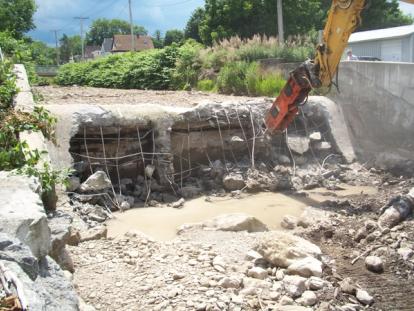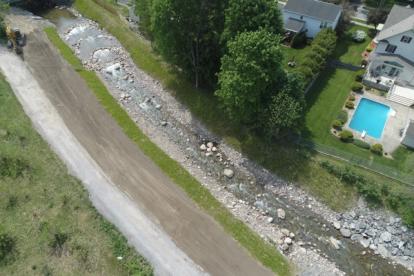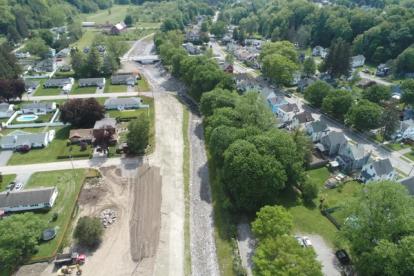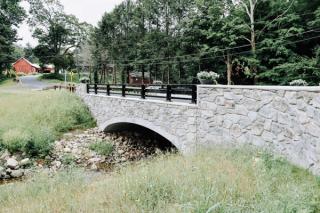
Steele Creek Restoration and Flood Mitigation
- Client Name
- Village of Ilion, New York
- Location
- Ilion, New York, USA
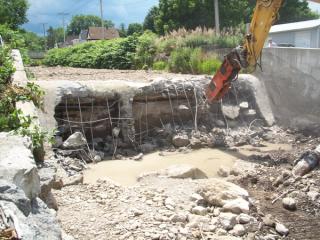
This project received a National Recognition Award at ACEC's Engineering Excellence Award Gala and ACEC New York's Diamond Award in Water Resources
Challenge
Severe flooding-related damages had been reported along Steele Creek in the village of Ilion, New York, for over a century. These issues escalated as the Village grew and development increasingly encroached on the creek’s floodplain.
To mitigate these chronic flooding problems, the village engaged SLR to design and implement a solution that would address existing flooding problems and ensure that future flooding events would have minimal effect on the community.
Major project components that led to a solution included the removal of a dam; removal of sediments behind the dam to lower the channel bed; demolition and removal of flood prone homes along the creek; removal of flood prone roadways; widening of the Steele Creek channel; creation of floodplain; replacement of a hydraulically undersized bridge and retrofitting of a second bridge; installation of in-stream habitat features; utility relocations; and construction of a sanitary sewer pump station to replace a gravity sewer line that had passed under Steele Creek.
Solution
Steele Creek was a multifaceted engineering project with many complex components. Two hydraulically undersized bridges spanned the creek within the project area and had to be addressed during project design.
Disturbance of utilities was required for this project, including relocation of a gas main and removal of an abandoned sanitary line, and relocation of a water main and an active sanitary line, the latter of which required installation of a pump station and force main.
During construction, streamflow in Steele Creek was diverted around the project area by use of a large volume pump, coffer dam, and a 36-inch diameter bypass pipe.
The USGS operates a stream flow gauge on Steele Creek. The proposed channel modifications required the temporary removal of this gauge and re-establishment following completion of the project.
The Steele Creek channel was very uniform and lacked aquatic diversity and in-stream habitat features. Riffles, rock vanes, pools, and boulder clusters were added to the channel to provide grade control, roughness, and in-stream habitat. Streambanks and floodplain were planted with native riparian species. With the removal of the dam, passage of fish and other aquatic organisms was restored along Steele Creek.
The project required multiple regulatory permits from the US Army Corps of Engineers and the New York State Department of Environmental Conservation.
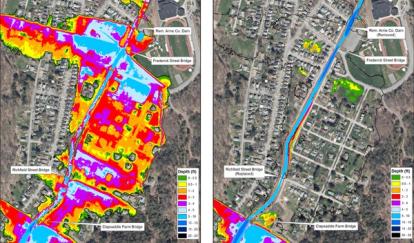
Impact
This project increased public understanding of the factors contributing to flooding along Steele Creek and corrected community misconceptions about required solutions. The project also demonstrated that engineered solutions to mitigate flooding and the restoration of natural in-stream habitat features are not mutually exclusive but are in fact very compatible. The project increased public awareness of the influence of climate change on local flooding and how this issue can be addressed as a component of project design.
After successful completion of the project, the Village’s mayor, John P. Stephens, provided a letter of support and touted its lasting benefits to the community:
From the inception of the Steele Creek Restoration and Flood Mitigation Project through to the completion of construction, SLR worked closely with the village board and staff, the construction company, state and federal agencies, and other involved parties to deliver a quality project. The successful implementation of the project has led to a reduction in the level of stress in the village each time we experience heavy rains because we have seen a reduction in the frequency and severity of flooding in the village.
John P. Stephens, Village Mayor
